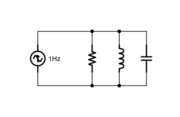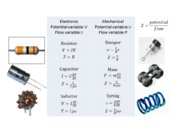Difference between revisions of "Lab Manual: Limits of Detection"
From Course Wiki
Steven Nagle (Talk | contribs) |
|||
| Line 5: | Line 5: | ||
==Overview== | ==Overview== | ||
| + | Atomic force microscopy and optical trapping are key techniques for investigating forces in biological systems at cellular and molecular levels. In this lab, you will investigate the limits of force detection using AFM and optical traps. The lab will involve a one hour lab session in which you will take data with an instructor. You will analyze the data to determine the instrument spring constant ''α'', the detector responsivity ''R'', and the limit of force detection ''δ''. | ||
| + | |||
| + | ===Background reading=== | ||
| + | * [Neuman & Nagy. Single-molecule force spectroscopy: optical tweezers, magnetic tweezers and atomic force microscopy Nature Methods - 5, 491 - 505 (2008)|http://www.nature.com/nmeth/journal/v5/n6/full/nmeth.1218.html]. | ||
| + | |||
==Resolution limit== | ==Resolution limit== | ||
Revision as of 16:53, 9 May 2014
Overview
Atomic force microscopy and optical trapping are key techniques for investigating forces in biological systems at cellular and molecular levels. In this lab, you will investigate the limits of force detection using AFM and optical traps. The lab will involve a one hour lab session in which you will take data with an instructor. You will analyze the data to determine the instrument spring constant α, the detector responsivity R, and the limit of force detection δ.
Background reading
- [Neuman & Nagy. Single-molecule force spectroscopy: optical tweezers, magnetic tweezers and atomic force microscopy Nature Methods - 5, 491 - 505 (2008)|http://www.nature.com/nmeth/journal/v5/n6/full/nmeth.1218.html].
Resolution limit
Second order system
- $ \dfrac{1}{Z_{eq}}=\dfrac{1}{Z_R}+\dfrac{1}{Z_L}+\dfrac{1}{Z_C} $
- $ Z_{eq}=\frac{Z_R Z_L Z_C}{Z_R Z_L + Z_R Z_C + Z_L Z_C} $
- $ Z_{eq}=\frac{\hat{V}_o(s)}{\hat{I}_{in}(s)}=\frac{RL/C}{RLs+\dfrac{R}{Cs}+\dfrac{L}{C}}=\frac{Ls}{LCs^2+\dfrac{L}{R}s+1} $
Mechanical circuit analogy
$ \frac{\hat{V}_o(s)}{\hat{F}_{in}(s)}=\frac{\dfrac{1}{m}s}{s^2+ \dfrac{b}{m} s+\dfrac{k}{m} } $


